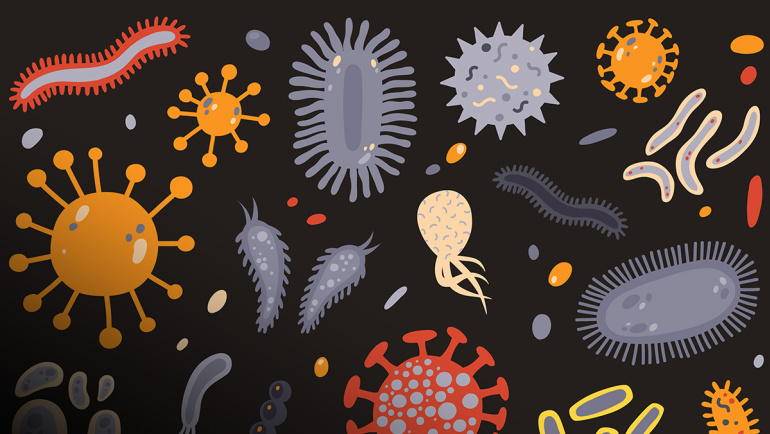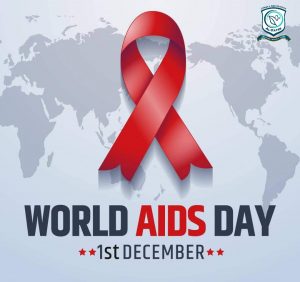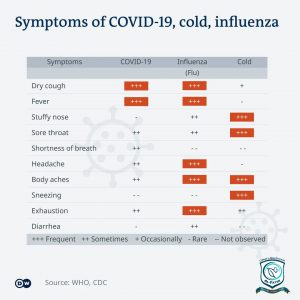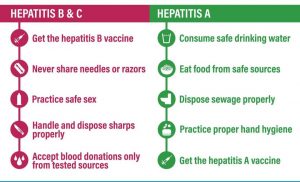

The history of humanity has been shaped by infectious illnesses, which are still a serious threat to global public health today. There are many infectious illnesses, but a few stand out as being especially significant because of their extensive incidence, impact on populations, and potential for global epidemics.

We will examine the most significant infectious diseases in this essay, talking about their sources, transmission, importance on a global scale, prevention, and the difficulties they pose for global healthcare systems.
AIDS and the human immunodeficiency virus (HIV) continue to pose one of the most serious infectious disease concerns in the world. HIV impairs the immune system, making people more prone to cancer and other illnesses. The main ways that the virus is spread are through sexual contact and using contaminated syringes,needles, and from mother to baby during pregnancy,delivery or breastfeeding.
There are more than 38 mill ion people living with HIV worldwide, which has a terrible effect. Since the outbreak began, the virus has claimed more than 32 million deaths. Significant social and economic repercussions follow, especially in sub-Saharan Africa, where the burden is greatest.
ion people living with HIV worldwide, which has a terrible effect. Since the outbreak began, the virus has claimed more than 32 million deaths. Significant social and economic repercussions follow, especially in sub-Saharan Africa, where the burden is greatest.
Antiretroviral therapy (ART) to control the infection, prevention through safe sex habits and needle exchange programs, and education and awareness campaigns are all part of the fight against HIV/AIDS. Despite advancements, issues including stigma, treatment access, and financing shortages continue.World AIDS day is celebrated on 01 December each year.

Tuberculosis is primarily caused by the bacterium Mycobacterium tuberculosis, has devastated humanity for centuries. It mainly affects the lungs but can also target other organs. TB spreads through the air (Aerosol transmission) when an infected person coughs or sneezes, making it highly contagious.
TB is among the top ten causes of deaths worldwide, with an estimated 10 million new cases and 1.4 million deaths each year. Multidrug-resistant TB (MDR-TB) and extensively drug-resistant TB (XDR-TB) create additional challenges to control and treatment efforts.
Preventing TB involves early diagnosis, prompt treatment, and vaccination with the Bacille Calmette-Guérin (BCG) vaccine. Efforts are ongoing to develop more effective TB vaccines and treatments. World Tuberculosis day is celebrated on 24 March each year.

The parasitic disease malaria, which is spread by infected mosquitoes carrying the Plasmodium parasite, is still a problem in tropical and subtropical areas, particularly in Africa. The condition can cause fatal organ failure, severe anemia, and death.

Each year, malaria causes over 229 million infections and close to 500,000 fatalities. The most vulnerable groups are young children and expectant mothers.

Malaria prevention strategies include early diagnosis, antimalarial drugs, insecticide-treated bed nets, and indoor residual spraying. An efficient malaria vaccine is being developed through ongoing research. World Malaria day is celebrated on 25 April each year.
The novel coronavirus SARS-CoV-2 that produced the COVID-19 pandemic has quickly grown to be one of the most important global health problems in recent memory. It causes severe respiratory diseases with a variety of symptoms and spreads by respiratory droplets.

COVID-19 has caused millions of illnesses and fatalities worldwide as of the time of writing. Healthcare systems are under stress, economies in crisis, and social and psychological effects follow.

The pandemic is being managed by vaccine drives, testing, contact tracking, mask use, and social distancing strategies. The spread of the pandemic is still being influenced by virus variants and problems with vaccine distribution.
Influenza, or the flu, is caused by influenza viruses that affect the respiratory system. It is highly contagious and can lead to seasonal epidemics and occasional pandemics. Influenza is primarily transmitted through respiratory droplets.
Seasonal influenza causes millions of illnesses and hundreds of thousands of deaths globally each year. Pandemics, such as the 1918 Spanish flu and the 2009 H1N1 pandemic, have had catastrophic consequences.
Vaccination is a key strategy for preventing influenza, especially among vulnerable populations like the elderly and young children. Antiviral medications can also help mitigate the severity of the illness.

Hepatitis B and C viruses infect the liver and can lead to chronic liver disease, cirrhosis, and liver cancer. Both viruses are primarily transmitted through contact with infected blood or bodily fluids.
Hepatitis B affects more than 290 million people globally, while hepatitis C affects approximately 71 million. These infections pose significant long-term health risks and economic burdens.
Preventing hepatitis involves vaccination for hepatitis B and harm reduction strategies for hepatitis C, including safe injection practices and access to treatment. World Hepatitis day is celebrated on 28 July each year.


Efforts to combat these diseases involve a combination of prevention strategies, including vaccination, safe practices, early diagnosis, and treatment. The challenges they present, from drug resistance to pandemic threats, underscore the need for ongoing research, international cooperation, and investments in public health infrastructure.
Infectious diseases continue to exert a significant toll on human health and well-being. HIV/AIDS, tuberculosis, malaria, COVID-19, influenza, and hepatitis B and C are among the most important infectious diseases due to their global prevalence, impact on populations, and potential for widespread outbreaks.
Al-Fateh College
Lane 07,Park Road<Islamabad
051-8891008
umerchatha444@gmail.com
Mon – Fri 9:00A.M. – 5:00P.M.